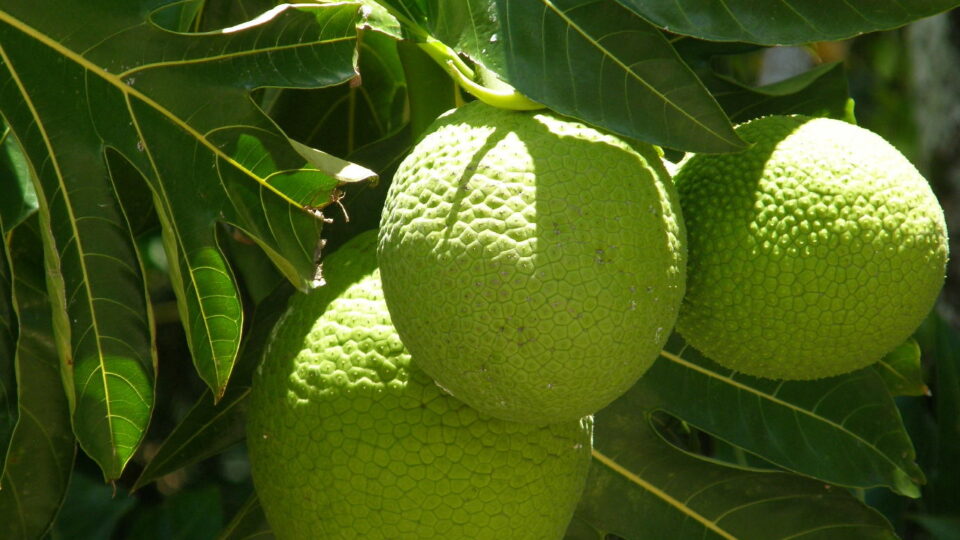Researchers predict that climate change will negatively impact most staple food crops, including rice, corn, and soybeans. Therefore, climate resilient food crops – those that are salt, drought, and heat resilient – will have an important role to play in global food security. Examples of climate resilient crops include quinoa, kernza, amaranth, millet, and tepary beans.
According to a new study by researchers from Northwestern University, breadfruit – a starchy tree fruit native to the Pacific Islands – will be relatively unaffected by climate change. Because breadfruit is climate resilient and well-suited to grow in regions with high levels of food insecurity, the research team suggests breadfruit could be a part of the solution to global hunger.
While it has ”fruit” in its name, breadfruit is more like a potato. It’s starchy and seedless, and is closely related to jackfruit. Breadfruit is nutrient-rich, and high in fiber, vitamins, and minerals. It can be steamed, roasted, fried, fermented, and even turned into flour. People in tropical regions around the world have been eating breadfruit for thousands of years.
In the study, which was recently published in the journal PLOS Climate, researchers determined the climate conditions necessary to cultivate breadfruit and then looked at how these conditions are predicted to change in the future. They examined two future climate scenarios: one that reflects high greenhouse-gas emissions and another in which emissions stabilize.
In both scenarios, the regions suitable for breadfruit cultivation were mostly unaffected. Additionally, the researchers identified new suitable land where breadfruit cultivation could expand.
As the climate continues to change, breadfruit might soon be on a table near you.
**********
Web Links
Climate-resilient breadfruit might be the food of the future
Photo, posted August 11, 2007, courtesy of Malcolm Manners via Flickr.
Earth Wise is a production of WAMC Northeast Public Radio
